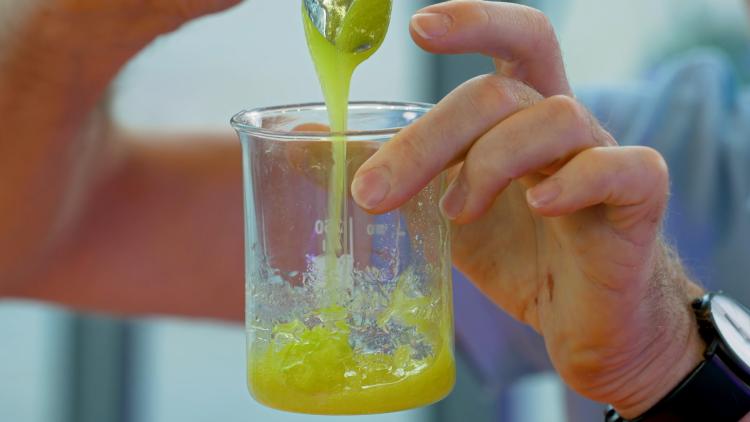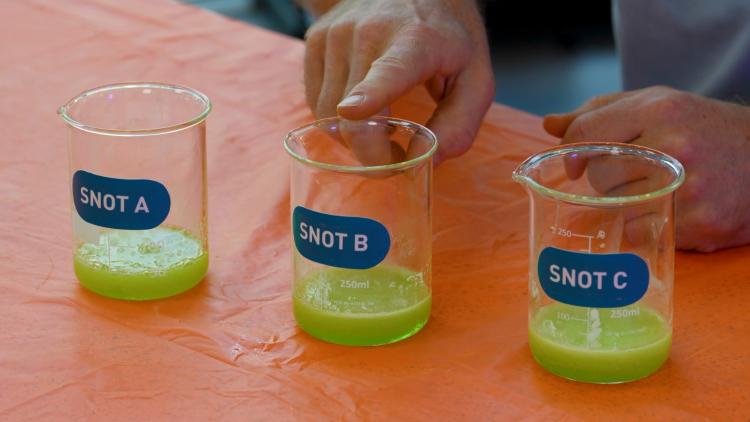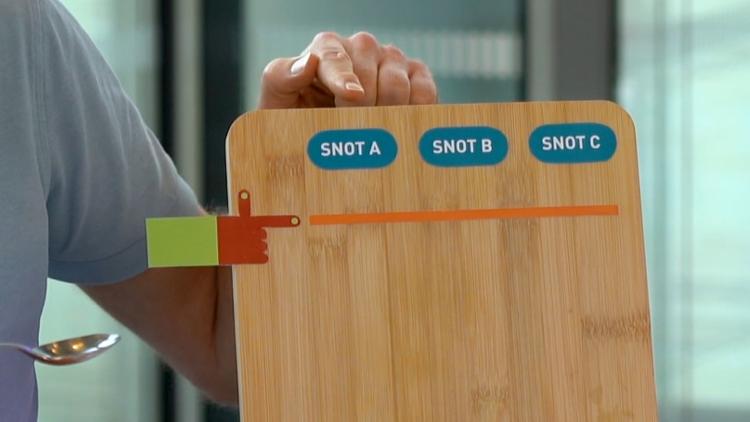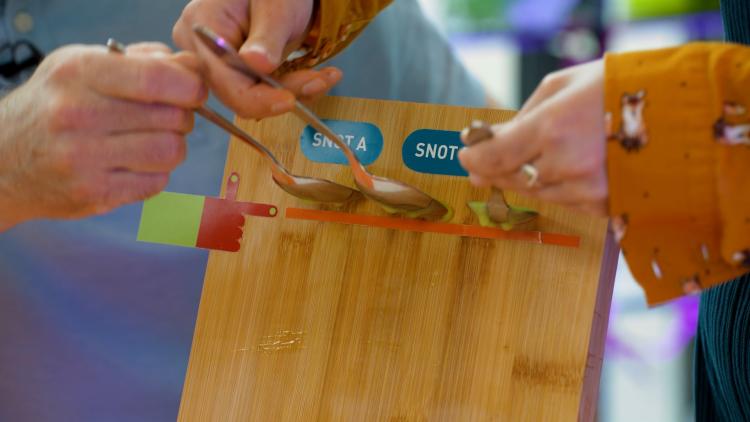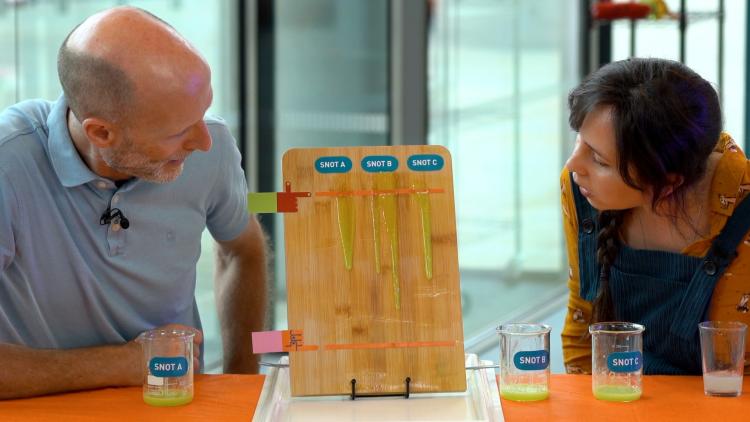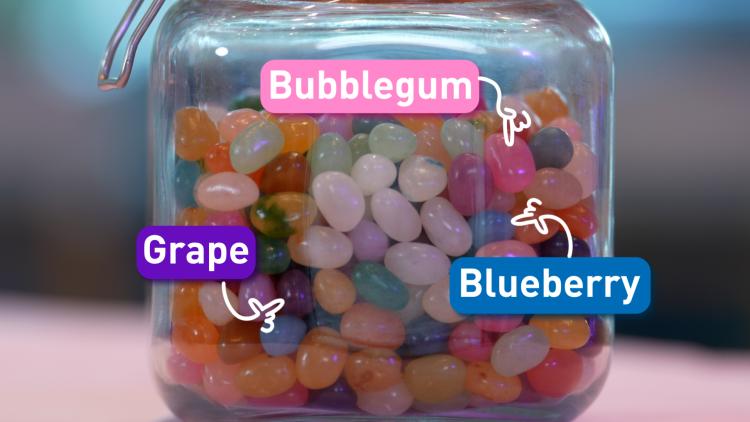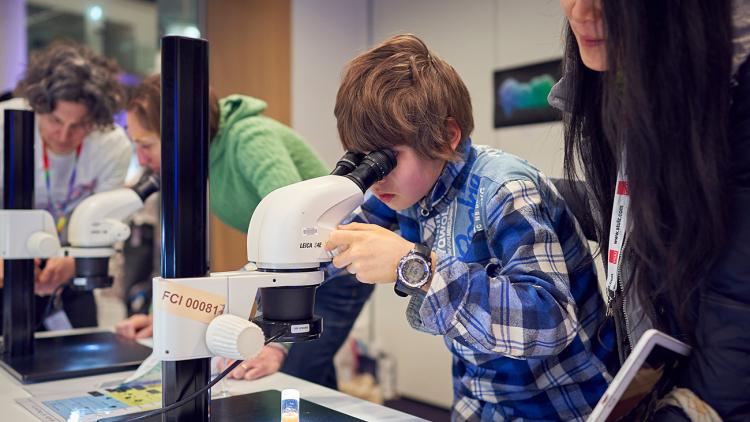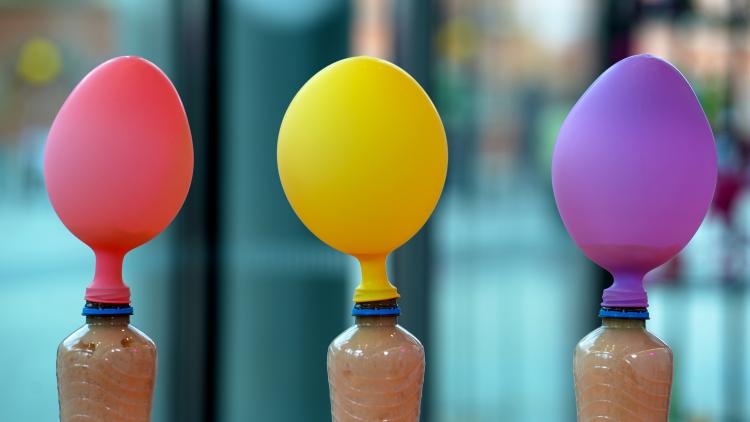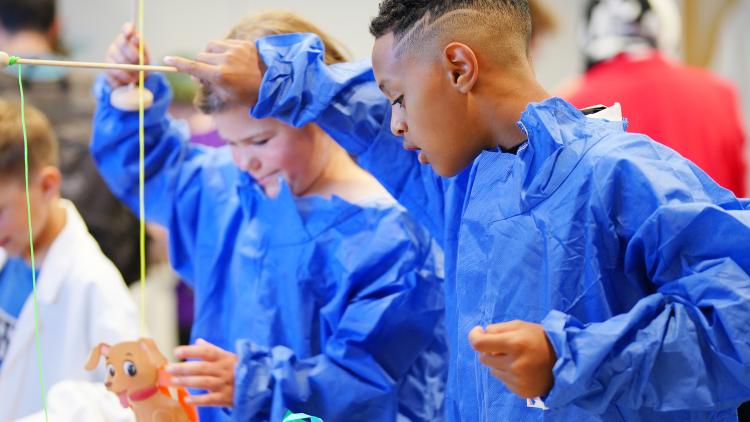Make your own snot
This activity will take 30 minutes, is for ages 7 to 10 with supervision needed.
In this experiment, you will make some pretend snot and understand how it keeps you healthy.
You can even compete with friends or family in a snot race.
What you'll need
- Washing up liquid
- Salt
- Green or yellow food colouring (optional)
- A teaspoon
- A cup or mug to mix your snot in
- A chopping board
Step by step
What's in your snot?
The snot from your nose is a mixture of a few different things, but it is mostly a liquid called mucus. Mucus is a clear liquid mainly made out of water, lots of different proteins made by our cells and electrolytes.
You’ll find mucus in lots of different parts of your body. It's up your nose, in your throat and even inside your lungs. Anywhere in your body that needs to stay moist to work properly is covered in a layer of mucus. This stops it from drying out.
If mucus is clear, why is your snot sometimes different colours? Mucus is sticky and the mucus in your nose catches germs that you breathe in. When your body fights off the germs, it makes chemicals that are green and yellow. So green or yellow snot is a sign that you’re fighting off bacteria or germs.
Our science
The surfaces in your lungs are covered in lots of tiny cells that are shaped like fingers. These are called cilia.
The cilia help to push all the mucus and any germs that it's caught out of the lungs. Lots of teams of scientists at the Crick are looking at how the cilia work. If we know how the cilia push out the germs and mucus, we can help people whose cilia work differently, or people who have more mucus.


